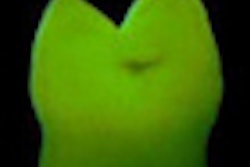A quantitative light-induced fluorescence (QLF) imaging tool was able to detect cariogenic levels of dental biofilm based on the intensity of red fluorescence, according to a new study in the Journal of Dentistry (September 3, 2013).
Researchers at Yonsei University College of Dentistry initiated dental microcosm biofilms from human saliva on bovine enamel disks. Biofilms with various levels of cariogenicity were then grown in artificial saliva supplemented with sucrose at different concentrations in 24-well microplates.
After 10 days, the researchers used quantitative light-induced fluorescence-digital (QLF-D) to capture fluorescence images of the biofilms and analyze the red fluorescence intensity (the red/green ratio). They also measured the supernatant pH and the total and aciduric bacteria counts of the collected biofilms and evaluated mineral loss in enamel by calculating the percentage of surface microhardness changes.
They found a strong correlation between the red/green value and the number of aciduric bacteria (p < 0.0001), supernatant pH (p < 0.0001), and percentage of surface microhardness changes (p < 0.0001).
"The red fluorescence as observed by the QLF-D was correlated with the cariogenic properties of dental microcosm biofilms in vitro, which indicates that this device can be used to detect the levels of cariogenicity of a dental biofilm," the study authors concluded.



















